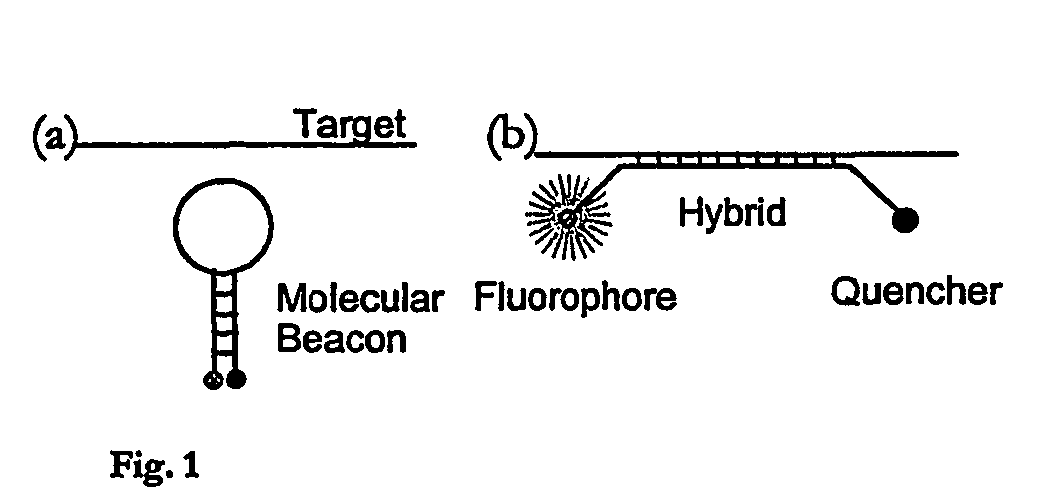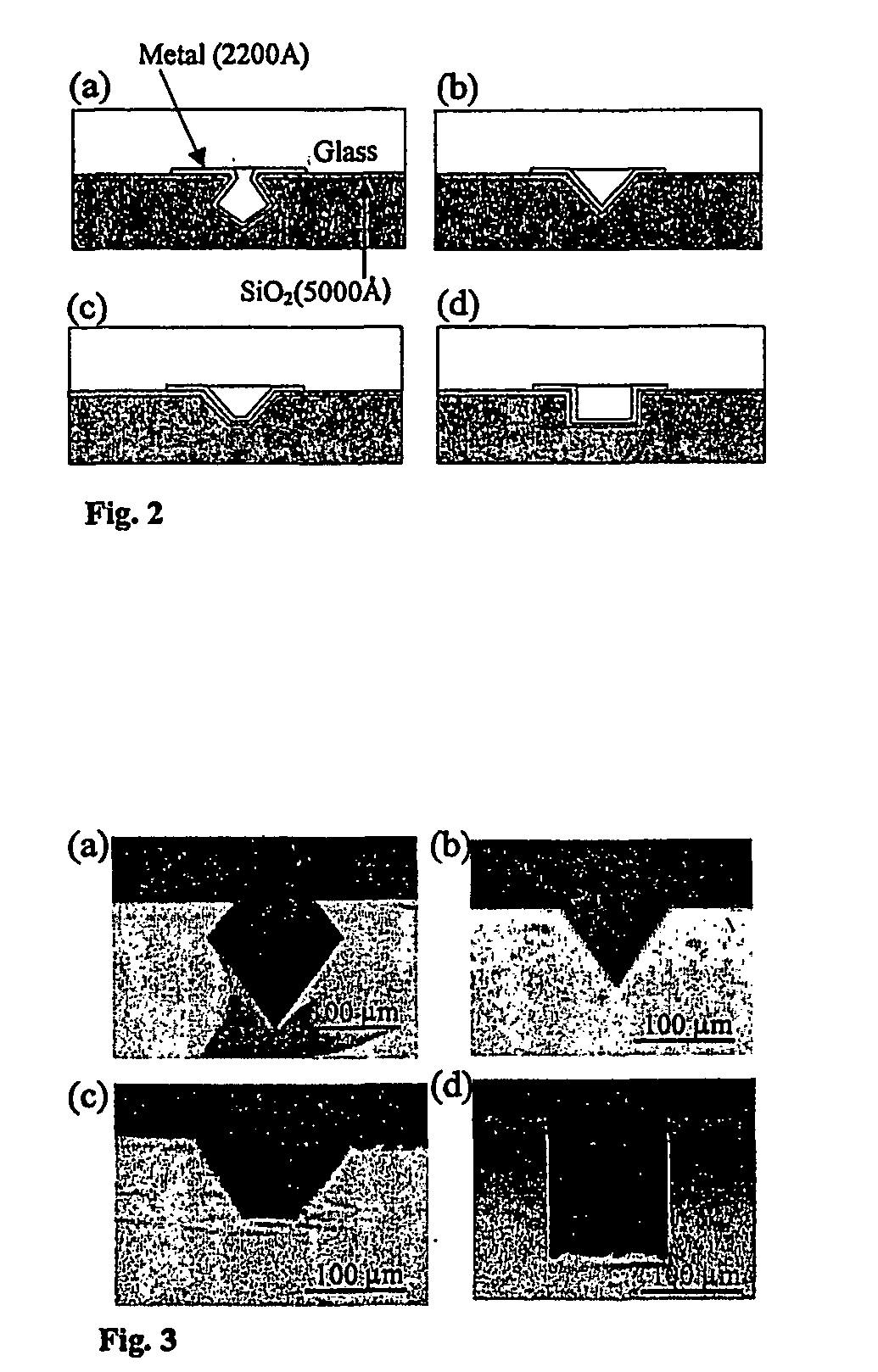Biosensors and methods for their use
a biosensor and sensor technology, applied in the field of biosensors, can solve the problems of reducing the sensitivity of the sensor, and reducing the choice of post-fabrication (chip bonding) materials, so as to reduce the size of the sensor surface to volume ratio, reduce the size of the sensor, and improve the sensitivity. the effect of the sensitivity
- Summary
- Abstract
- Description
- Claims
- Application Information
AI Technical Summary
Benefits of technology
Problems solved by technology
Method used
Image
Examples
example 1
Microchannels Integrated with Sidewall Mirrors for Biological Detection Using Molecular Beacon Technology
[0085] This illustrative example discloses the fabrication of microchannels integrated with sidewall mirrors and the application for in-channel optical DNA / RNA detection. The detection specificity is achieved by using molecular beacon CB) based DNA hybridization technique. Molecular beacons are highly sensitive and selective oligonucleotide probes (see e.g. S. Tyagi, F. R Kramer, “Molecular beacons: Probes that fluoresce upon hybridization”Nature Biotechnol. 14 (1996), 303-308) that become fluorescent upon hybridization with target DNA / RNA molecules as shown in FIG. 1. By using MB probe technology, two of the major but cumbersome steps of gene-based biosensors, probe immobilization and washing (see e.g. S. R. Mikkelsen, Electroanalysis, 8 (1996) 15; J. Gau, E. Lan, et al., Proceedings of the Fourth International Symposium on I-TAS (2000)), can be eliminated. This realizes in-cha...
example 2
Microchannels of Different Geometries Integrated with Sidewall Mirrors for Polynucleotide Detection Using Molecular Beacons
[0090] In this example, the eight hundred bases long nucleic acid targets used for detection were synthesized by polymerase chain reaction (PCR). The sense (5′-CAGAT GGGAT TAGCT AGTAG GTG-3′) (SEQ ID NO: 2) and antisense (5′-GTCTC ACGGT TCCCG AAGGC AC-3) (SEQ ID NO: 3) primers derived from the most conserved region of 16s rRNA of E. coli. (MC41000) were identical to those used in the previously reported study [See, e.g., T. H Wang et al., proceedings of METMBS'00, pp295-300]. Initially, 50 μl DNA solution with concentration of 0.2 μM and 50 μl MB solution of the same concentration were mixed for biosensor characterization. The signal to noise ratio (SNR) and detection limit of channels with various geometries and surface coatings are determined by testing the different channels with the serially diluted solution. Because of the introduction of molecular beacons...
example 3
Electrical Focusing for Laser Induced Fluorescence Based Single DNA Molecules Detection
[0095] This example describes a method, 3-D electrokinetic focusing technique, to concentrate fluorescence labeled molecules into a tiny probing volume to enhance the mass detection efficiency for laser induced fluorescence (LIF) based molecular sensing. By applying this method for detecting DNA of very low concentration (20 fM), single molecule fluorescence bursts were real time determined, and more than five times enhancement of mass detection efficiency was achieved. Comparing this method with the other molecular focusing techniques such as hydrodynamic focusing [A. Castro and J. G. K Williams, Anal. Chem. 69, 3915-3920 (1997)] and electric current focusing [S. C. Jacobson and J. M. Ramsey, Anal. Chem. 69, 3212-3217 (1997)]. This method can also enhance the concentration detection limit and overcome the off-center problems of sample stream due to the slight conductivity changes of the cross ch...
PUM
| Property | Measurement | Unit |
|---|---|---|
| Fraction | aaaaa | aaaaa |
| Fraction | aaaaa | aaaaa |
| Fraction | aaaaa | aaaaa |
Abstract
Description
Claims
Application Information
 Login to View More
Login to View More - R&D
- Intellectual Property
- Life Sciences
- Materials
- Tech Scout
- Unparalleled Data Quality
- Higher Quality Content
- 60% Fewer Hallucinations
Browse by: Latest US Patents, China's latest patents, Technical Efficacy Thesaurus, Application Domain, Technology Topic, Popular Technical Reports.
© 2025 PatSnap. All rights reserved.Legal|Privacy policy|Modern Slavery Act Transparency Statement|Sitemap|About US| Contact US: help@patsnap.com



